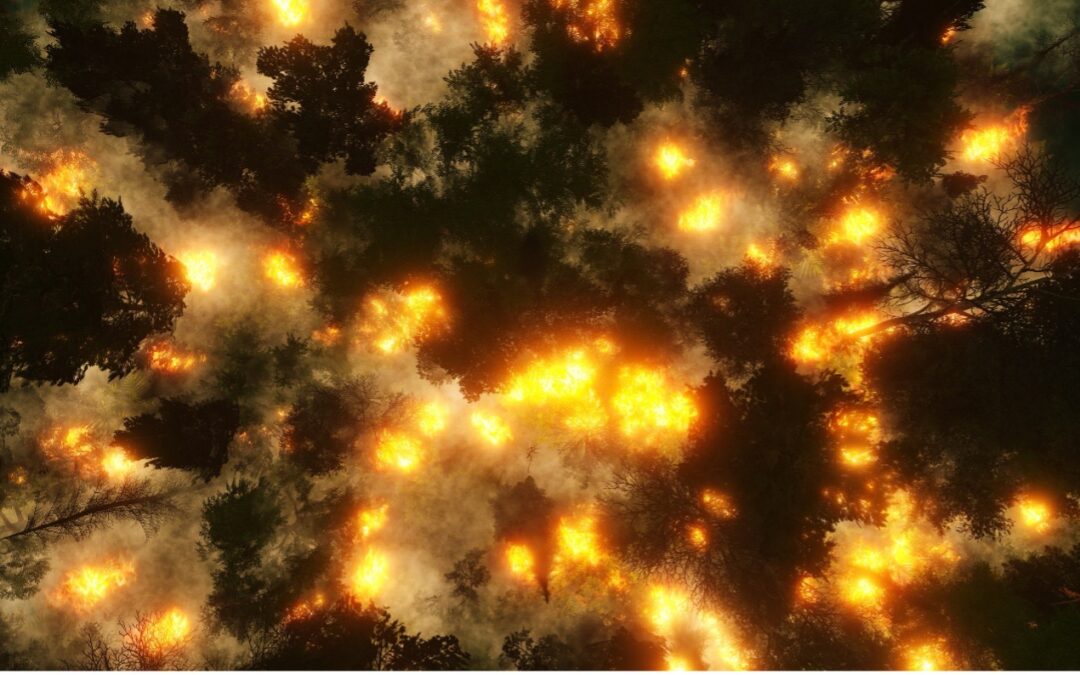Wildfire “season” no longer exists. In years past, most U.S. wildfires occurred between June and August. Now, blazes are breaking out in early spring and lasting well into November (and beyond). Rising temperatures and dry vegetation have created the need for yearlong wildfire vigilance.
In 2022, the U.S. experienced 66,000-plus fires and more than 7.5 million acres burned—well above the 10-year average. In 2023, we’ve seen more than 40,000 fires and 2.1 million acres burned. Today, one in six Americans are exposed to significant wildfire risk, and climate change is expected to exacerbate that over the next 30 years.
Nationally, there were 56,580 wildfires reported in 2023, compared to 68,988 wildfires reported in 2022. Reported wildfires consumed 2,693,910 acres nationally, compared to 7,577,183 acres in 2022. Already in 2025, we have seen the catastrophic California fires. Trends indicate future fires will also burn more acres of land. The average annual amount of acres burned has been steadily increasing since 1950. The number of megafires—fires that burn more than 100,000 acres (156 square miles)—has increased in the past two decades.
The U.S. has experienced staggering losses because of wildfires, especially in the wildland urban interface (WUI), the area between undeveloped and developed land that is home to nearly a third of the country’s population. Additionally, recent population growth and decades of growing housing development in the WUI leave our nation vulnerable to further loss.
Experts have sounded the alarm on more severe wildfire seasons, both now and in the future; however, many organizations have not adjusted risk mitigation strategies to ensure the safety of their people and assets. Organizations of all sizes and industries should modernize their wildfire preparedness plans to minimize losses for both the business and employees—and they should go well beyond traditional evacuation routes.
Here are three areas of focus to consider as you revamp your wildfire readiness plan.
1. Location Audits
Wildfire preparedness plans are not one-size-fits-all. For a plan to be effective, it’s essential to conduct a thorough risk assessment of each location and record anything unique to that facility.
Location-specific policies and procedures can include guidance on tasks, such as propane tank removals, directions on handling important documents and providing multiple evacuation routes. Although the details will vary by location, using a standard format will create consistency across plans so safety leaders can quickly provide directions on where to find information and checklists during stressful moments, even if they’re not on-site.
In addition to auditing each location, it’s key to plan for how to transfer processes, supplies and tools from one facility to another in the event of wildfire evacuation or fire damage. This will also help you maintain safe operations if wildfires result in temporary staffing changes, such as if employees are injured or displaced.
2. Employee Training
Updated and frequent training is crucial to ensure plans are actionable and new procedures stay top-of-mind for all employees. Regularly hosting tailored tabletop exercises and in-person simulations at each individual location can aid memory retention and uncover areas for improvement.
And research shows that as risks for severe weather and natural disasters increase, employees want updated and consistent training. In a recent study from AlertMedia, 84% of employees surveyed said their employer could do more to make them feel prepared to handle emergencies at work. The research shows a strong correlation between the frequency of safety training and employees’ ability to navigate a crisis.
Frequent safety training helps employees feel more adequately equipped to handle emergencies and execute official emergency response plans. This ensures employee safety—and it increases an organization’s resiliency.
Wildfire preparedness training should include remote employees, too. Make sure they determine the proper evacuation routes for their home offices, have access to wildfire information resources and understand wildfire evacuation order stages to keep themselves—and their families—safe.
3. Communication Tools
Effective communication assures safety and business continuity are maintained despite wildfire dangers. Modernized emergency communication tools enable safety leaders to reach the right people at the right time with relevant information, quickly. Platforms with multichannel, two-way messaging capabilities allow safety leaders to confirm deliverability and identify employees who need help, thereby reducing emergency response times and eliminating confusion. Leveraging wildfire communication templates for the most common scenarios can also accelerate access to information when sharing time-sensitive updates.
Wildfires can also cause significant operational downtime. Efficient communication can mean the difference between a resilient organization and heavy revenue loss. A reliable, easy-to-use communication system means leaders can confirm employees are aware of temporary operational changes and status updates along the way, minimizing lost productivity.
Wildfire Preparedness is Good for Business
Wildfires will pose a threat to nearly every organization in some shape or form. If it is not the fires themselves, it may be the smoke that stretches hundreds, if not thousands, of miles away, as we have seen with the wildfires in Canada.
Today’s organizations must build cultures rooted in safety and security to prepare for the effects of climate change. Organizations must involve every employee, maintain connection and transparency with those employees during emergencies, and assess and reassess the entirety of emergency situations to determine the actual—or potential—impact from wildfires.
Emergency preparedness plans must be ever improving as wildfires continue to increase in number, size, and severity.
Spencer-SHE has been providing Safety, Health and Environmental Compliance Guidance since 1980. Our team can analyze wildfire risks using yearlong planning strategies and approaches for before, during, and after a fire.
Contact us here to help you to develop and maintain a safe and healthy workforce.
Sources:
Photo: Microsoft Stock Image
https://www.ncei.noaa.gov/access/monitoring/monthly-report/fire/202313

